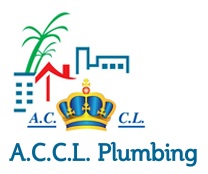In today’s fast-paced business environment, digital invoicing and payment systems have become essential tools for companies to streamline their billing and payment processes. These systems enable businesses to automate invoicing, track payments, and reduce administrative burdens, resulting in improved cash flow and increased efficiency.
Benefits of Digital Invoicing and Payment Systems
– Automated Invoicing: Digital invoicing systems allow businesses to create and send invoices automatically, reducing manual errors and saving time.
– Faster Payment Processing: Digital payment systems enable customers to make payments online, reducing the time it takes to receive payments and improving cash flow.
– Reduced Administrative Burden: Digital invoicing and payment systems automate many administrative tasks, freeing up staff to focus on more strategic activities.
– Improved Accuracy: Digital systems reduce the risk of errors and discrepancies, ensuring that invoices and payments are accurate and reliable.
– Enhanced Customer Experience: Digital invoicing and payment systems provide customers with convenient and flexible payment options, improving their overall experience.
Key Features of Digital Invoicing and Payment Systems
– Customizable Invoices: Digital invoicing systems allow businesses to create customized invoices that reflect their brand and include all necessary information.
– Automated Payment Reminders: Digital payment systems can send automated reminders to customers, reducing the need for manual follow-up.
– Multiple Payment Options: Digital payment systems often offer multiple payment options, such as credit cards, bank transfers, and online payment gateways.
– Real-time Tracking: Digital invoicing and payment systems provide real-time tracking and reporting, enabling businesses to monitor their cash flow and make informed decisions.
– Integration with Accounting Software: Many digital invoicing and payment systems integrate with popular accounting software, streamlining financial management and reducing errors.
Popular Digital Invoicing and Payment Systems
– FreshBooks: A cloud-based accounting and invoicing platform that offers automated invoicing, payment tracking, and online payment processing.
– QuickBooks: A comprehensive accounting platform that includes digital invoicing and payment capabilities, as well as integration with popular payment gateways.
– PayPal Invoicing: A digital invoicing tool that allows businesses to create and send invoices, track payments, and receive payments online.
– Stripe: A payment processing platform that offers digital invoicing and payment capabilities, as well as integration with popular e-commerce platforms.
– Zoho Invoice: A cloud-based invoicing platform that offers automated invoicing, payment tracking, and online payment processing, as well as integration with popular accounting software.
Best Practices for Implementing Digital Invoicing and Payment Systems
– Choose a System that Meets Your Needs: Select a digital invoicing and payment system that aligns with your business requirements and integrates with your existing accounting software.
– Customize Your Invoices: Create customized invoices that reflect your brand and include all necessary information.
– Set Up Automated Payment Reminders: Configure automated payment reminders to reduce the need for manual follow-up and improve cash flow.
– Offer Multiple Payment Options: Provide customers with multiple payment options to improve their experience and increase the likelihood of timely payments.
– Monitor and Analyze Performance: Use real-time tracking and reporting to monitor your cash flow and make informed decisions about your business.
By implementing a digital invoicing and payment system, businesses can streamline their billing and payment processes, reduce administrative burdens, and improve cash flow. With the right system in place, companies can focus on growth and development, while enjoying the benefits of efficient and automated financial management.

